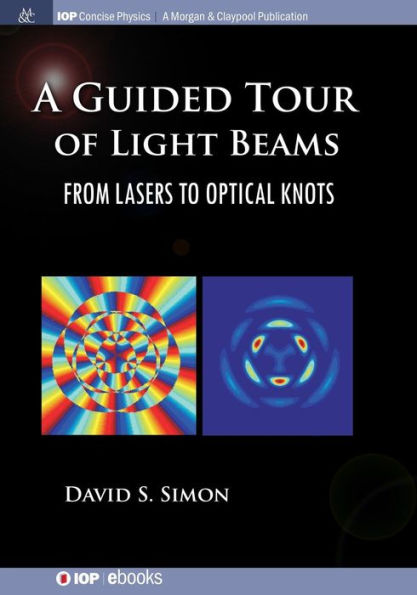A Guided Tour of Light Beams: From Lasers to Optical Knots
From science fiction death rays to supermarket scanners, lasers have become deeply embedded in our daily lives and our culture. But in recent decades the standard laser beam has evolved into an array of more specialized light beams with a variety of strange and counterintuitive properties. Some of them have the ability to reconstruct themselves after disruption by an obstacle, while others can bend in complicated shapes or rotate like a corkscrew. These unusual optical effects open new and exciting possibilities for science and technology. For example, they make possible microscopic tractor beams that pull objects toward the source of the light, and they allow the trapping and manipulation of individual molecules to construct specially-tailored nanostructures for engineering or medical use. It has even been found that beams of light can produce lines of darkness that can be tied in knots. This book is an introductory survey of these specialized light beams and their scientific applications, at a level suitable for undergraduates with a basic knowledge of optics and quantum mechanics. It provides a unified treatment of the subject, collecting together in textbook form for the first time many topics currently found only in the original research literature.
1133508704
A Guided Tour of Light Beams: From Lasers to Optical Knots
From science fiction death rays to supermarket scanners, lasers have become deeply embedded in our daily lives and our culture. But in recent decades the standard laser beam has evolved into an array of more specialized light beams with a variety of strange and counterintuitive properties. Some of them have the ability to reconstruct themselves after disruption by an obstacle, while others can bend in complicated shapes or rotate like a corkscrew. These unusual optical effects open new and exciting possibilities for science and technology. For example, they make possible microscopic tractor beams that pull objects toward the source of the light, and they allow the trapping and manipulation of individual molecules to construct specially-tailored nanostructures for engineering or medical use. It has even been found that beams of light can produce lines of darkness that can be tied in knots. This book is an introductory survey of these specialized light beams and their scientific applications, at a level suitable for undergraduates with a basic knowledge of optics and quantum mechanics. It provides a unified treatment of the subject, collecting together in textbook form for the first time many topics currently found only in the original research literature.
45.0
Out Of Stock
5
1

A Guided Tour of Light Beams: From Lasers to Optical Knots
105
A Guided Tour of Light Beams: From Lasers to Optical Knots
105
45.0
Out Of Stock

Product Details
| ISBN-13: | 9781681744360 |
|---|---|
| Publisher: | Morgan and Claypool Publishers |
| Publication date: | 12/01/2016 |
| Series: | Iop Concise Physics |
| Pages: | 105 |
| Product dimensions: | 7.00(w) x 10.00(h) x 0.00(d) |
About the Author
From the B&N Reads Blog
